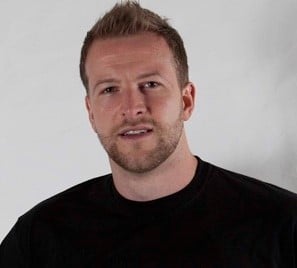HOW DID YOU GET INVOLVED IN RADIOLOGY?

After A-Levels I did a degree in radiography at Derby for 3 years. I stayed in Derby after my degree for 1 year as a basic radiographer which is where I got introduced to ultrasound. I did a lot of paediatric work, following my experience and interest in junior tennis coaching, which led me to paediatric radiology. One of the other radiologists introduced me to the ultrasound specifically in paediatrics. I got the bug from there really!
In 2004 I moved into the children’s hospital with the aim to do paediatric ultrasound. After 4 years trying to get in ultrasound, as it isn’t easy, I did 2 years ultrasound training. The training was great and included hands-on work, also within adults and vascular. I became really interested in the MSK side, especially because of my sports background. I knew paediatric MSK was a hard area to go into as it’s a very small circle and very niche. I moved to an adult hospital where one of the radiologists was keen on teaching ultrasound so I did a year working alongside them. Now I’ve been scanning within MSK for the last 6 years seeing 40/50 patients a week, including injections.
HAVE YOU SEEN THE GROWTH IN DIAGNOSTIC ULTRASOUND?
It’s definitely being used a lot more due to the demand! Mainly lumps and bumps from GPs, shoulders, groins, and ankles. A lot has changed (within the technology) with what you can see and show, the image quality so good. You now don’t need to go to MRI for a lot of things, ultrasound is really coming into its own and being used outside of radiology departments.
WHERE DO YOUR PATIENTS COME THROUGH FROM?
- Outpatient referred in from a Physio/Orthopaedic Surgeon
- Acute through A + E
HOW CAN PHYSIOTHERAPISTS AND SONOGRAPHERS WORK TOGETHER?
With the right training, the ultrasound is a fabulous tool for sonographers, radiologists and physiotherapists. It also depends what you’re using it for and your expectations, for example it works really well within physio clinics for tears and inflammation. I would imagine it’s a lot easier for a radiographer or a sonographer to get the correct qualifications than it is for a physiotherapist. Everyone needs to know their limits and the training that is required.
HOW REGULARLY DO YOU NEED TO SCAN TO BECOME COMPETENT?
A one-off course isn’t going to be enough. You need to be scanning at least once or twice a week, along with the right education and mentorship to support this. Training courses are also really good if you want to become specialised within a certain area and for follow up sessions you need. But you’ve got to be doing it regularly with access to the right machines and patients.
WHAT ARE THE MOST COMMON AREAS THAT YOU SCAN?
- Shoulders (to ensure there’s not a large tear)
- Achilles Tendon
- Groins
- Hernias
- General lumps and bumps
The ultrasound helps us guide our clinical suspicions better.
WHICH PROBES DO YOU USE MOSTLY?
- All linear probes (medium to high frequency)
- Hockey stick probe
WHAT ARE YOUR THOUGHTS ON THE NEWER SYSTEMS COMING TO THE MARKET?
With the new Phillips, GE and Samsung machines, the image quality is phenomenal, and the processing power and clarity of screens is excellent. Hopefully this will cascade down to the smaller machines and make them even better as well!
Working with Alpinion devices recently and seeing the quality of the machine for the price, you can’t argue that that would be something highly beneficial for a lot of people.
SUMMARY
If you want to get into ultrasound you’ve got to have a tutor/mentor to guide you, as well as knowing what you want to scan and find out. Then having access or purchasing your own device (with good quality) to practice, practice and more practice!
